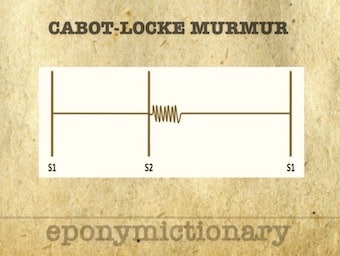
Tolosa-Hunt syndrome
Tolosa-Hunt syndrome: severe unilateral periorbital headache and ophthalmoplegia resulting from a non-caseating granulomatous inflammation of the cavernous sinus and/or superior orbital fissure.

Tolosa-Hunt syndrome: severe unilateral periorbital headache and ophthalmoplegia resulting from a non-caseating granulomatous inflammation of the cavernous sinus and/or superior orbital fissure.

The Henry Hill Hickman Medal, is awarded every three years to individuals for original work of outstanding merit in anaesthesia by the Council of the Royal Society of Medicine

Fitz-Hugh-Curtis syndrome refers to perihepatitic adhesions between the liver capsule and under surface of the anterior abdominal wall seen on laparotomy/laparoscopy.

Charles Bonnet syndrome: Visual hallucinations in psychologically normal elderly people and most commonly associated in individuals with visual impairment .

Kawasaki disease (KD) is an acute self-limited febrile multisystem vasculitis of childhood of unknown aetiology in which coronary artery aneurysms (CAA) may develop in 15% - 25% of untreated cases.

Still's Murmur ejection systolic murmur first described in 1909 by English pediatrician Sir George Frederic Still KCVO (1868 – 1941)

Capgras syndrome: uncommon syndrome in which a patient has a delusional belief that a person, usually a family member or friend, has been replaced by an imposter.

Roger’s murmur: holosystolic, loud murmur compared to the sound of a 'rushing waterfall'. Associated with ventricular septal defects (VSD)

The Cabot-Locke murmur is an early diastolic murmur found in patients with severe anaemia. The murmur resolves with treatment of the anaemia. There is no functional valvular abnormality present.

Carey Coombs murmur: short mid-diastolic murmur with active rheumatic carditis and mitral-valve inflammation. 1907 Carey Coombs (1879-1932)

Graham Steell murmur: soft, blowing, decrescendo early diastolic murmur of pulmonary incompetence caused by pulmonary hypertension

Gibson murmur (machinery murmur) associated with patent ductus arteriosus. Eponymously affiliated with George Alexander Gibson (1906)